Antonio Farnese's Apartment at the Rocca di Sala Baganza opens to the public for the first time.
An important first for a significant eighteenth-century fresco cycle: in fact, at the Rocca di Sala Baganza (Parma), theapartment of Antonio Farnese, located on the piano nobile within the private portion of the Rocca, opens to the public for the first time. Scheduled to reopen on September 22, 2024, the rooms of the apartment of Antonio Farnese (Parma, 1679 - 1731), the eighth duke of Parma (he ruled the state from February 27, 1727 until his death) will be open for guided tours.
The Rocca di Sala Baganza, whose origins date back to the 15th century, played a role of primary importance in the defensive system of Parma’s castles. When its defensive function ceased, it became a residence where the counts and dukes of the Sanvitale, Farnese and Bourbon families lived for centuries. Inside it preserves precious stuccoes and 16th-century frescoes by Orazio Samacchini, Ercole Procaccini, and Cesare Baglione.
Antonio Farnese’s apartment, one of the Rocca’s last decorative enterprises, was commissioned by the duke following a three-year journey among the major Italian and European courts-Antonio Farnese toured Europe under the pseudonym “Count of Sala.” In 1710, therefore, before he became duke, Antonio Farnese chose Sala Baganza as his holiday residence, so much so that it was in the following year that the first news of his plan to carve out a series of rooms inside the Rocca that were to make up his new apartment dates back to the following year. One of the most important specialists of the eighteenth century was called in to create the cycle of frescoes: the Tuscan Sebastiano Galeotti (Florence, 1675 - Mondovì, 1741), who had studied under one of the greatest artists of late Baroque decoration, namely Giovanni Gioseffo dal Sole, and whose career is studded with important undertakings in the palaces and churches of Pontremoli, Florence, Piacenza and even Parma (one of the chapels in the Cathedral is his). The frescoes were supposed to extol the virtues of Antonio Farnese: on the ceilings are a series of allegorical depictions where the protagonists are the gods of Olympus accompanied by personifications of vices and virtues.
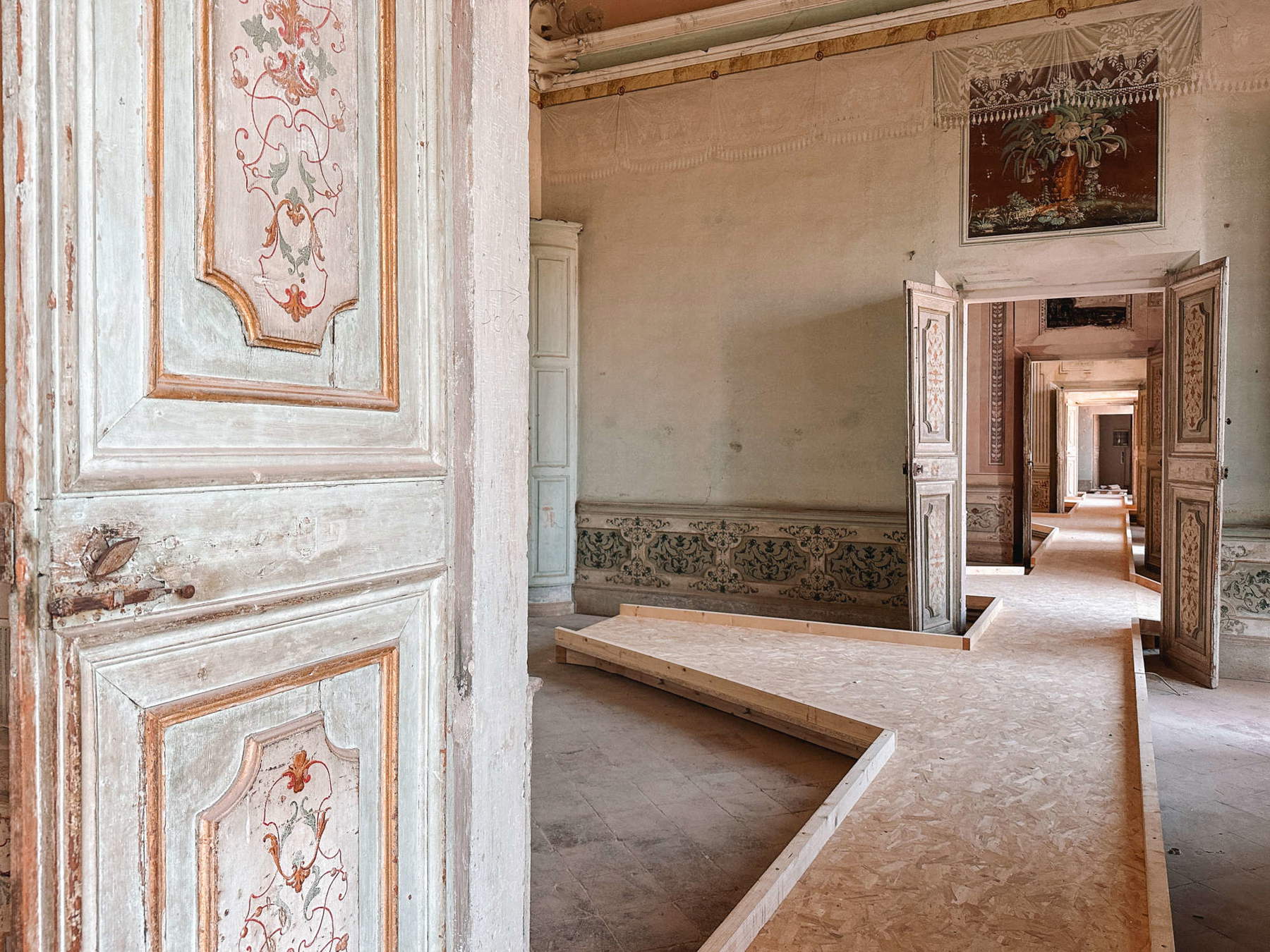
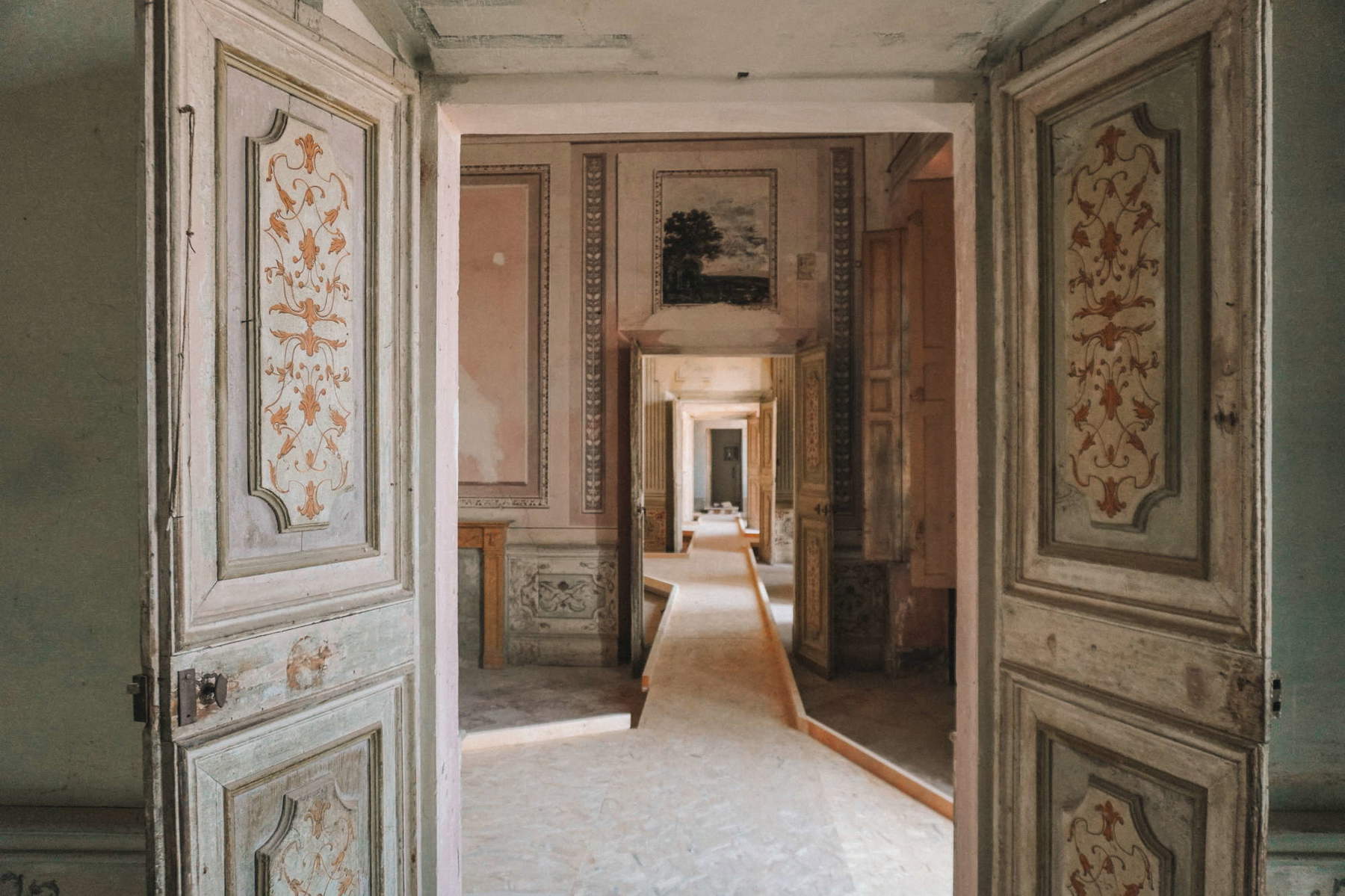
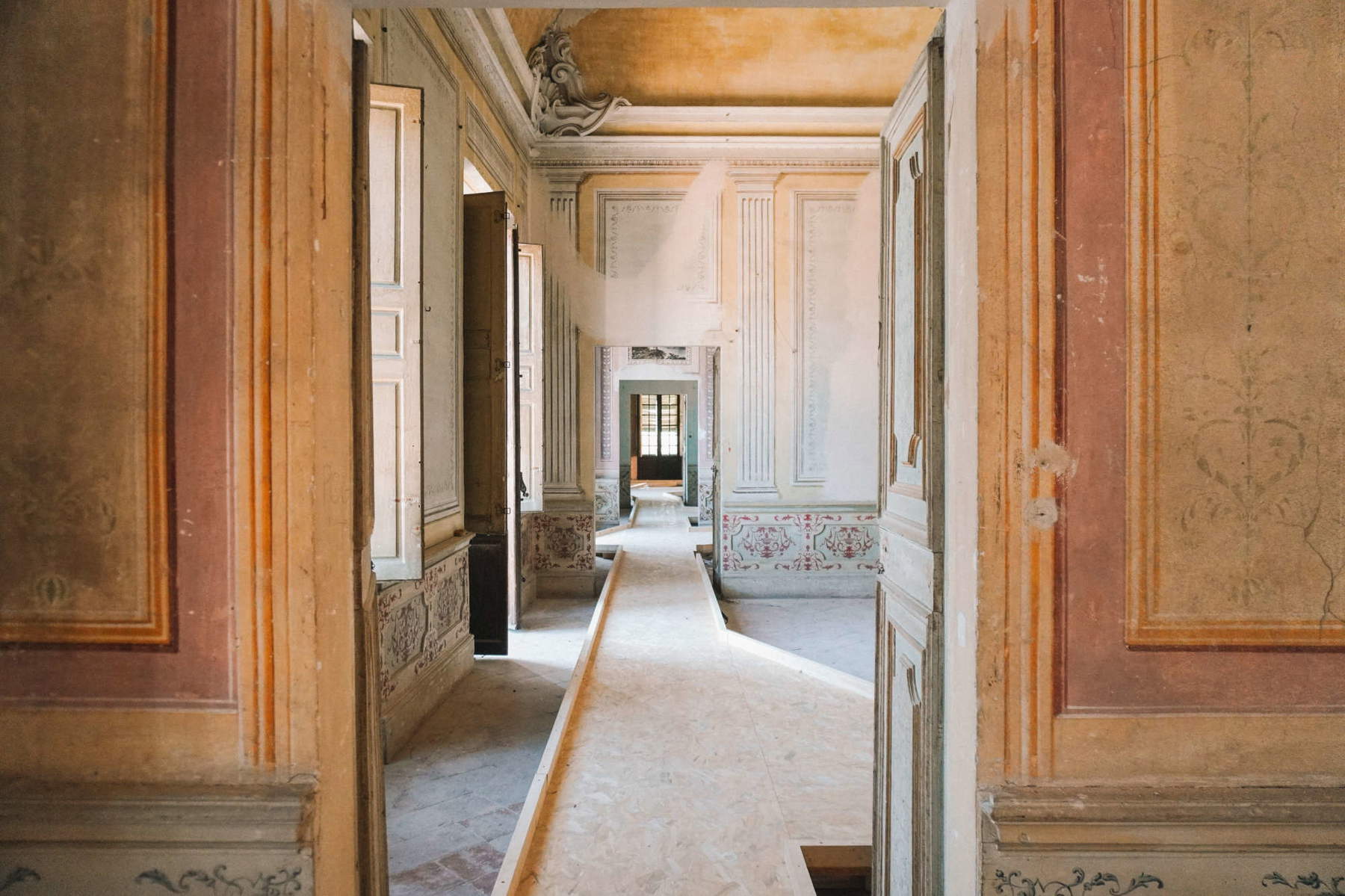
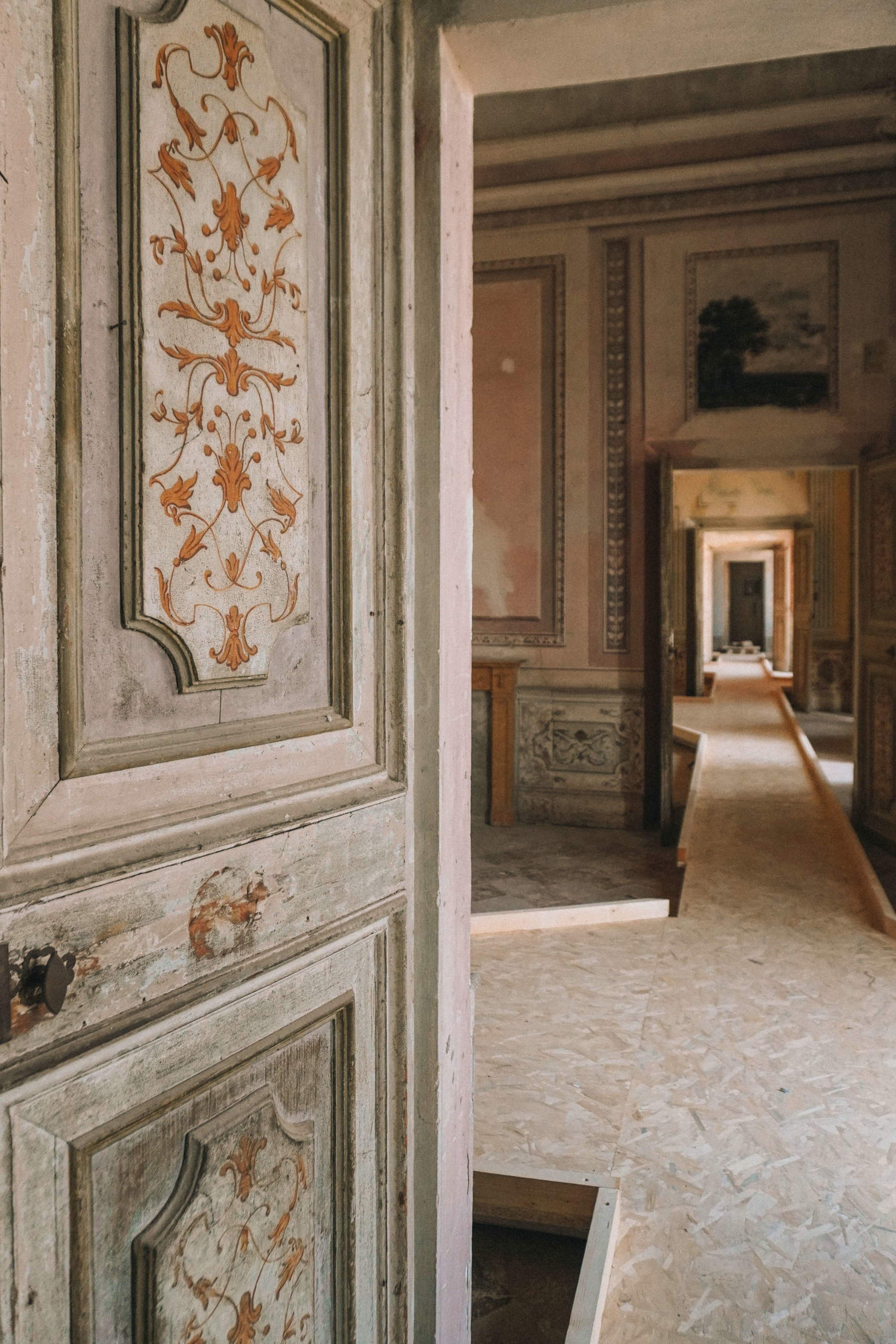
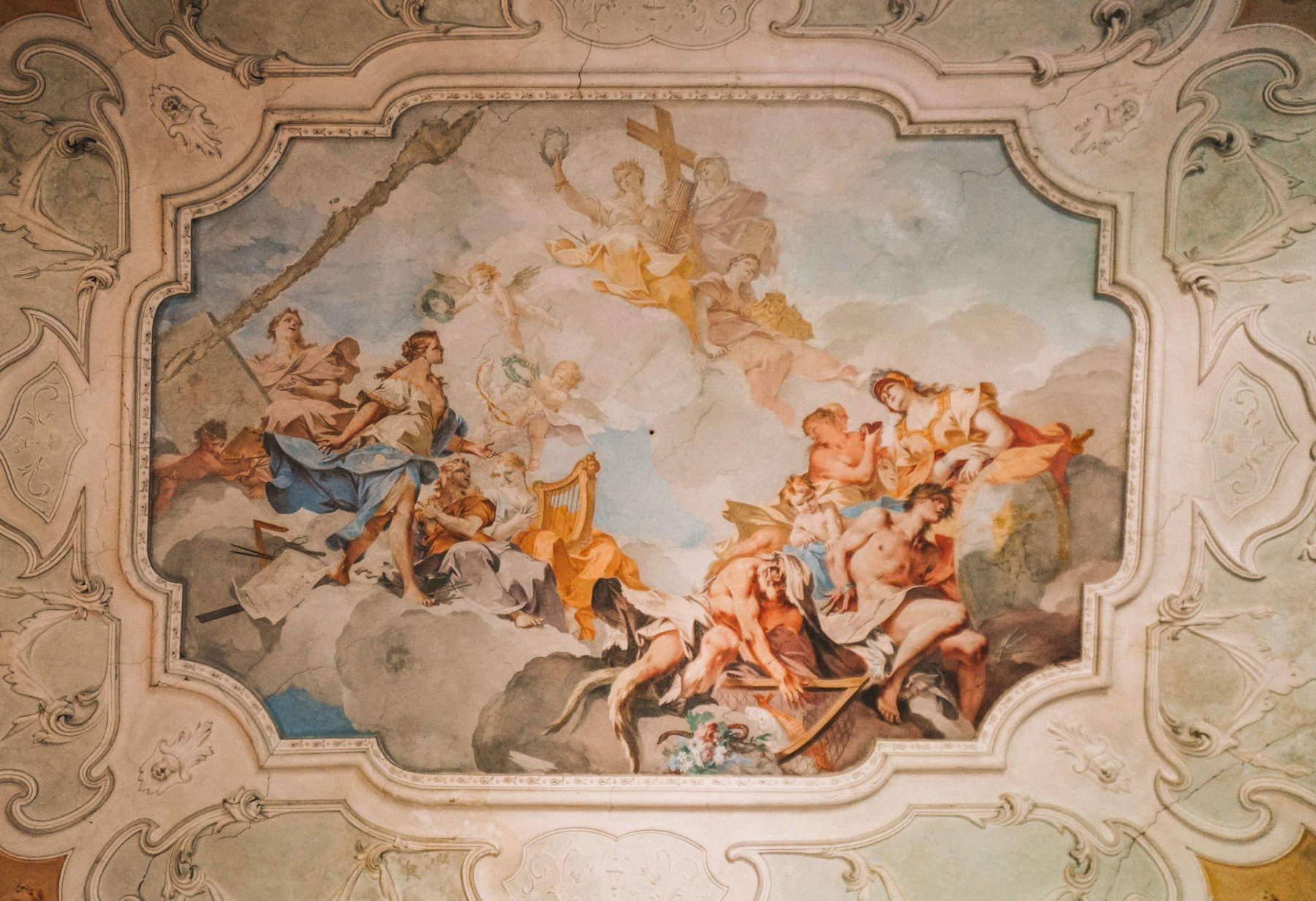
The opportunity to visit this apartment comes as a result of the recent consolidation works after the damage caused by the 2008 earthquake, financed and carried out thanks to a strategic public-private agreement between the property, the Municipality of Sala Baganza and Iren Smart Solutions, which have secured the eastern portion of the Rocca. The building, however, still remains in an apparent state of “fragility,” necessitating a future restoration program that, thanks to the new set-up made possible by the sponsorship of companies that are part of the “Parma, io ci sto” Association and the Circolo Vespini of Sala Baganza, will not prevent public visits, but will turn it into an open construction site. The installation, in fact, by design choice, has a removable nature and does not alter the environments in any way. It consists of a platform that moves inside the rooms guiding the visitor through the path and carries with it the plant infrastructure necessary for lighting, designed specifically to enhance the paintings.
Another distinctive element is the installation of dedicated paneling within each room of the apartment, which makes information about what the specific use of the room was and the content of the room’s decorative apparatus easily accessible to the public. Along with the paneling, there are also information totems with QR codes that provide further insights: thus offering the public a visit experience that is modular according to their knowledge and interests. The wealth of knowledge related to the history of the apartment and the content of the pictorial cycles reported in the information materials is made possible thanks to the research project carried out in collaboration with the University of Parma.
The possibility of admiring Galeotti’s cycle of frescoes and immersing oneself in the discovery of Antonio Farnese’s apartment comes from the collaboration between the private property and the Public Entity, as explained by the Mayor of Sala Baganza, Aldo Spina: “At the basis of this operation we have a structured collaboration with the private property that guarantees us the availability of these premises in the long term. From now on the apartment will be visible to everyone, for the first time open to the public. The new arrangement stems from a research project conducted with the University of Parma, which has returned a completely different cognitive picture in terms of awareness about the historical-critical knowledge of the apartment than the one known until a few years ago.”
The accompanied tour experience follows through the succession of rooms: these are rooms of great historical-artistic value with the subtle charm of the frescoes on the vaults and panels on the walls, the wainscoting and painted doors that tell of ancient places of representation and drawing rooms, and from which it is possible to find unprecedented views of the square leading to the castle and the geometries of the enchanting Farnese garden. The opening of Antonio Farnese’s apartment represents an opportunity to make the Rocca a place of identity for the local community and increasingly open to visitors with a view to value for the territory.
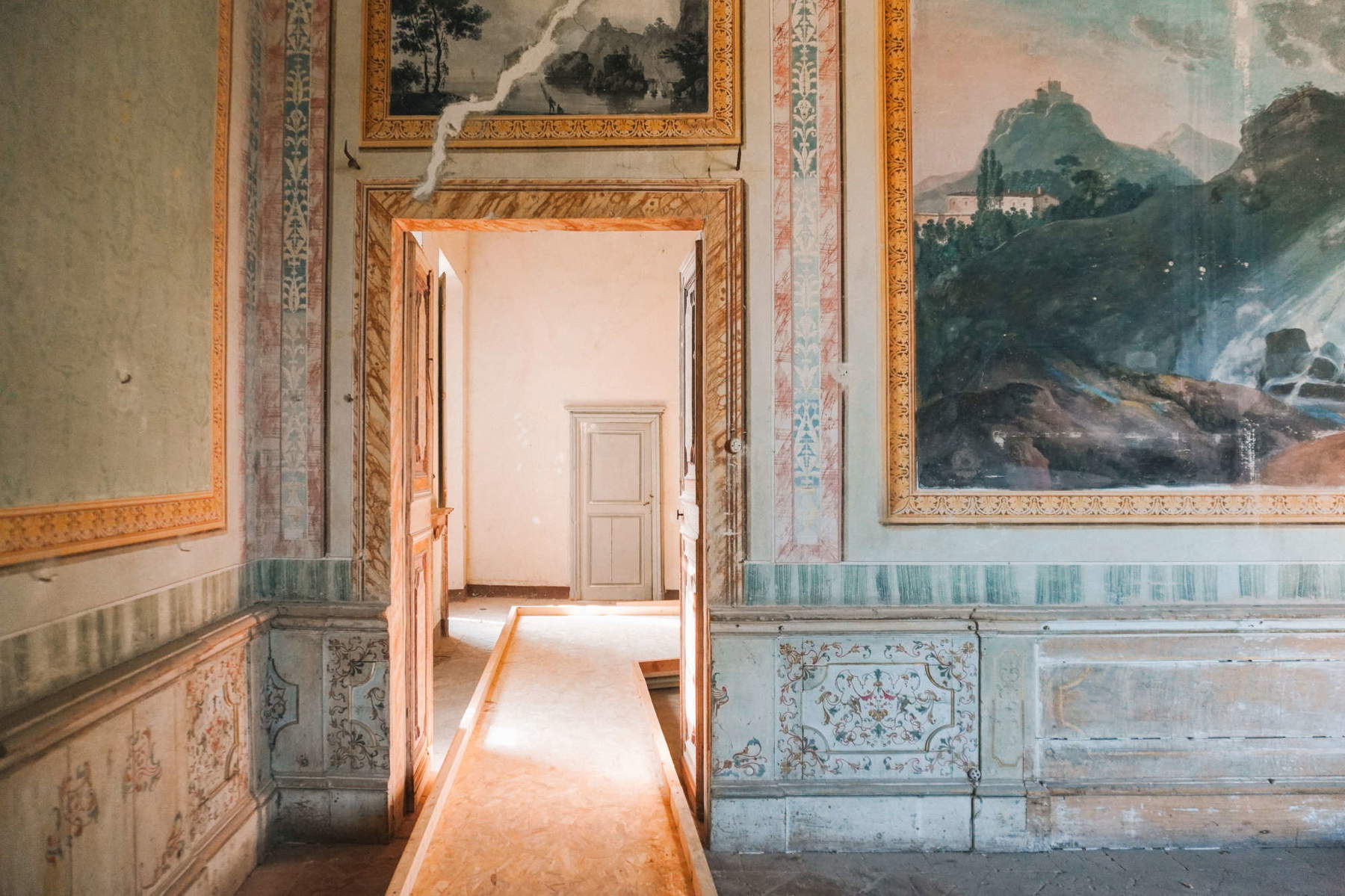
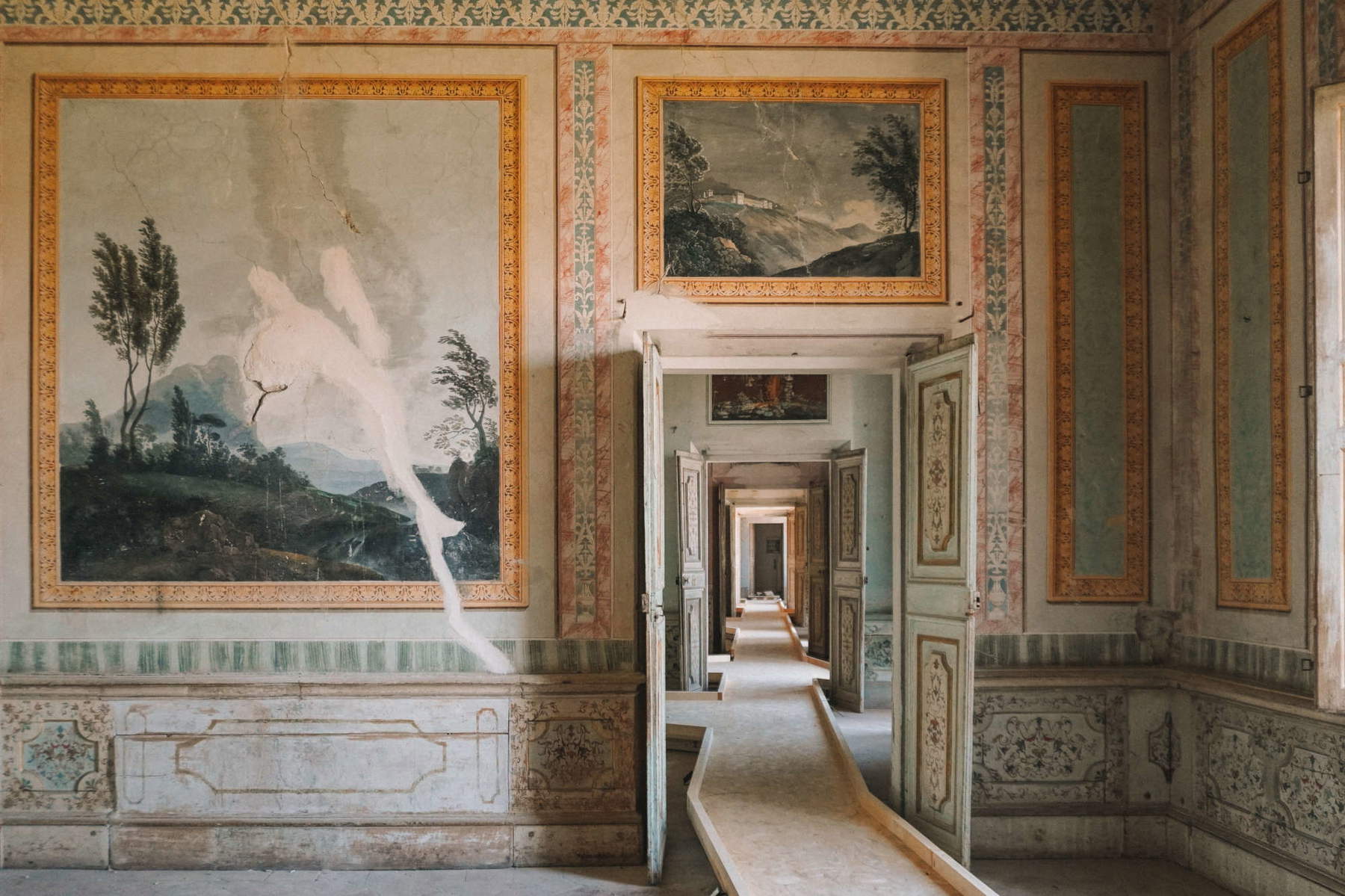
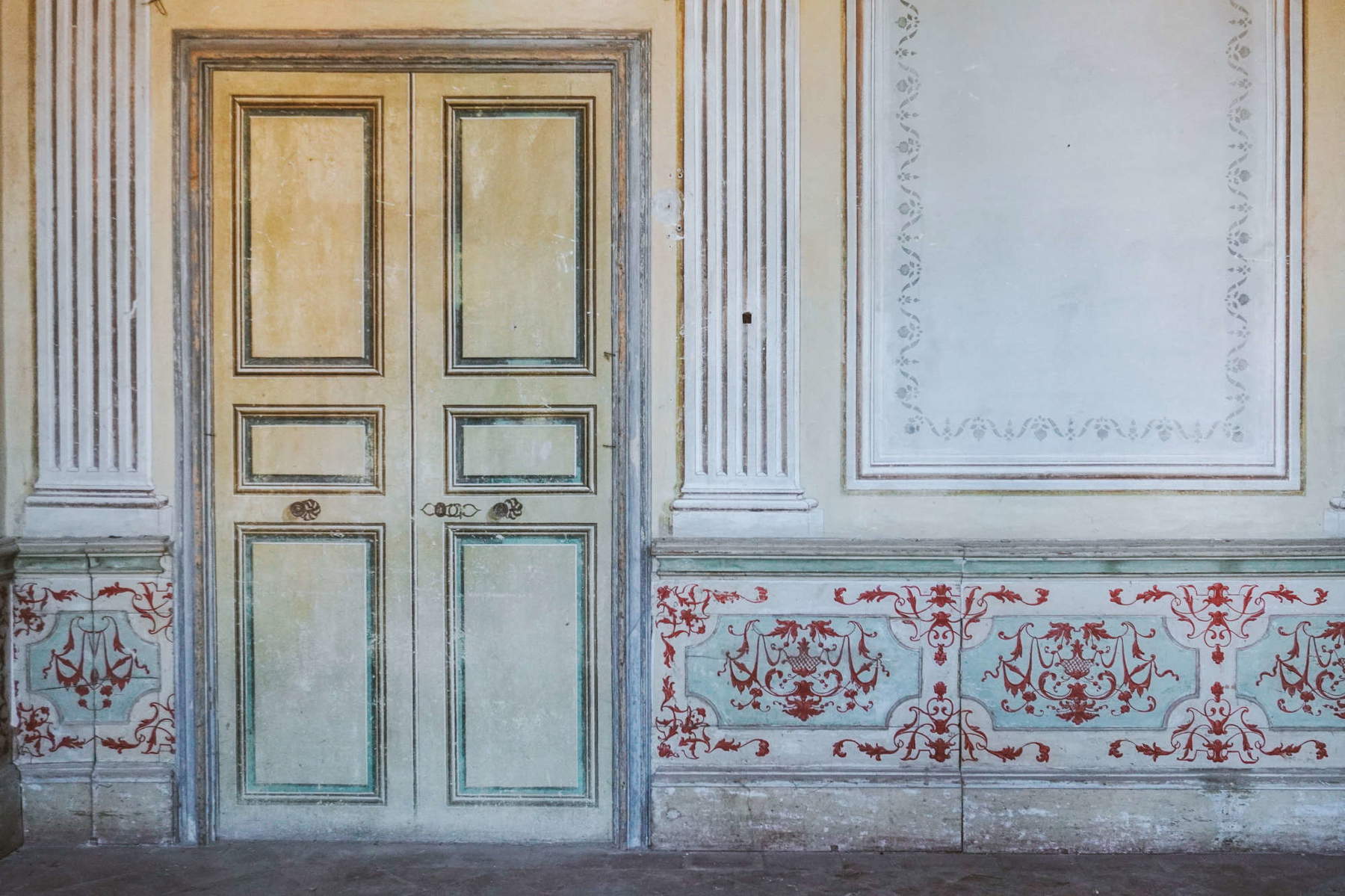
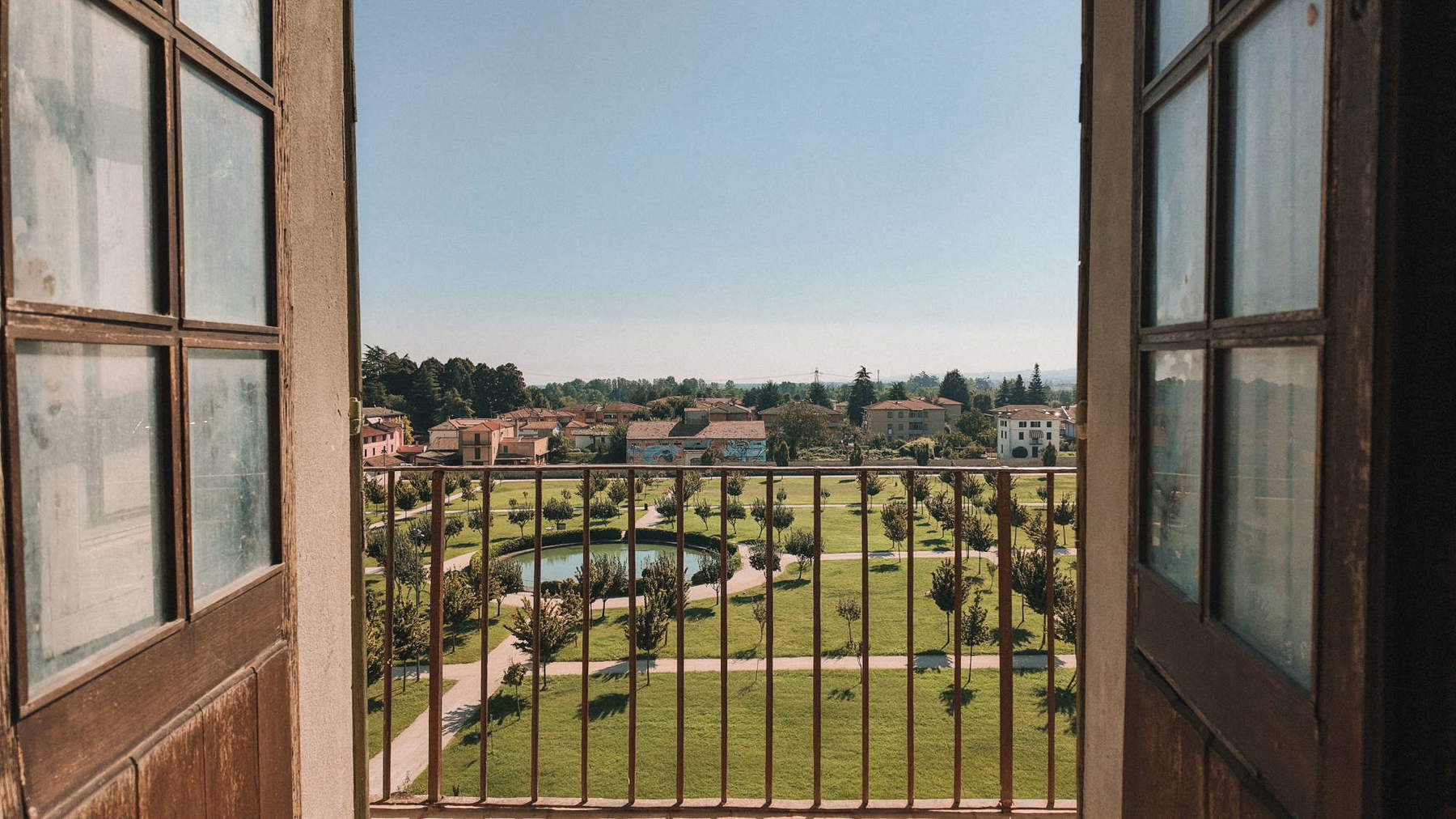
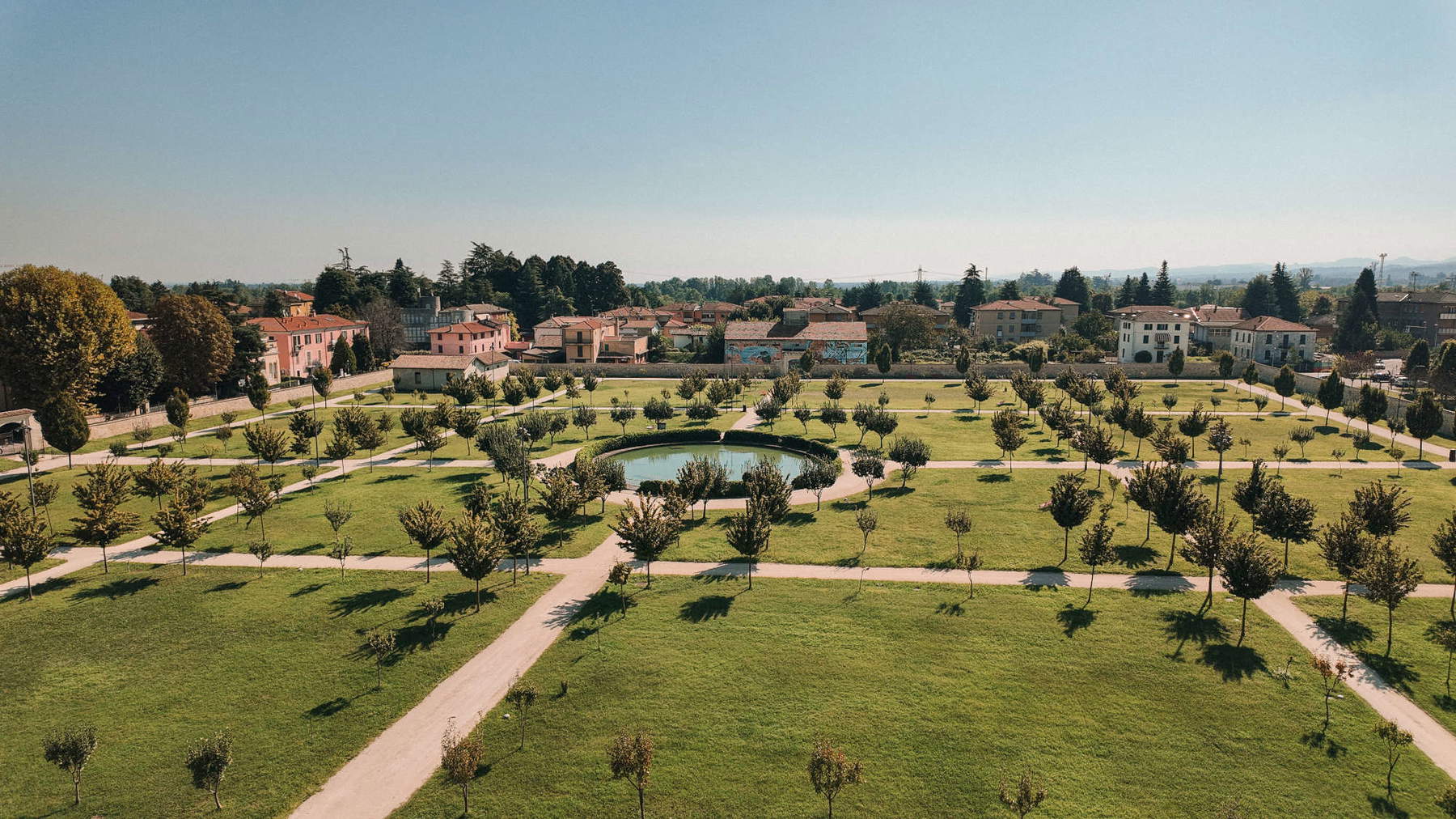
Technical and practical information for the visit
Antonio Farnese’s apartment can only be visited with an escorted tour. On Saturdays, Sundays and holidays, accompanied tours will be at 10:30 am, 12 noon, 3 pm and 4 pm and reservations are recommended; from Monday to Friday there is an accompanied tour at 11 am for which reservations are recommended, but it is also possible to visit Antonio Farnese’s apartment in the afternoons, with reservations required.
The cost of the admission ticket is 10 euros and includes a free tour of the Rocca di Sala Baganza and a guided tour of Antonio Farnese’s apartment. There are price reductions for groups and specific categories. Four-legged friends are also allowed access to the Rocca and Antonio Farnese’s apartment. For more information, contact IAT Unione Pedemontana Parmense: iat@unionepedemontana.pr.it - 0521 331342. Facebook page: www.facebook.com/roccasala. Instagram profile: www.instagram.com/roccasalabaganza
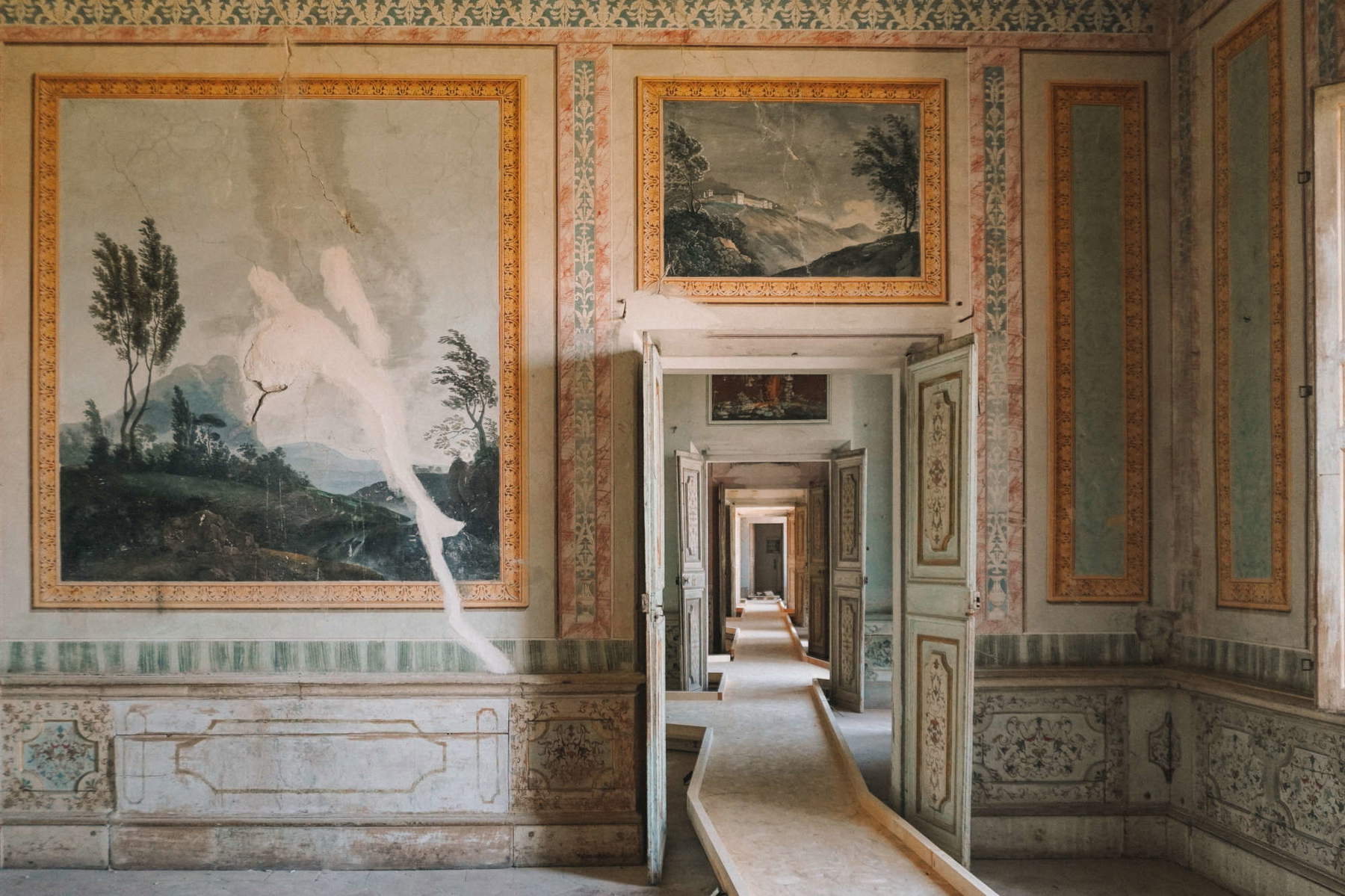 |
| Antonio Farnese's Apartment at the Rocca di Sala Baganza opens to the public for the first time. |
Warning: the translation into English of the original Italian article was created using automatic tools. We undertake to review all articles, but we do not guarantee the total absence of inaccuracies in the translation due to the program. You can find the original by clicking on the ITA button. If you find any mistake,please contact us.



























